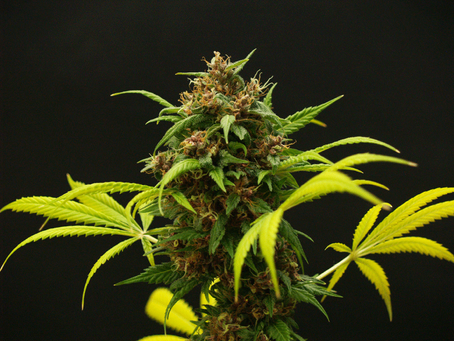Mythical Dutch outdoor variety that has filled the drying rooms of countless growers for decades. Its special resistance to mold and how easy it is to grow have made this plant even today one of the most successful options when growing outdoors.
Another fabulous variety from the Dutch Passion seed bank. Holland’s Hope was one of the first specimens that were acclimatized and grown outdoors in Holland in the early 80s. Since then, it has been proven, year after year, that it is one of the most reliable and recommended varieties for growing outdoors. free.
It adapts to any climate, but its hardness and resistance to pests, especially mold, make it indispensable in the most adverse climates. It is very easy to grow and very fast flowering. We can harvest it after only about eight weeks of flowering, it is ready between the end of September and the beginning of October.
It is a mainly Indica variety, with a THC percentage close to 15%. Holland’s Hope usually measure between one and two meters in height and grow bushily with abundant long lateral branches. The use of tutors is essential.
The foliage is very profuse and it is recommended not to fertilize it excessively, so as not to increase the proportion of leaves per bud. The harvests are very abundant with some specimens that can produce up to a kilo of flowers in appropriate conditions. The buds are large, but not very dense.
They stand out for the enormous concentration of pistils. Its flavor is very pleasant, smooth and especially earthy. The effects are light and are noticed very gradually, slowly immersing you in a deep state of relaxation, both physically and physically, which makes it ideal to consume at the end of the day and very appropriate for medicinal users.
The seeds recommended for outdoors by Dutch Passion are the result of decades of experience. These varieties are selected and developed in Holland and are especially resistant to diseases and mold, as well as very productive, so they adapt perfectly to colder environments.
Indoor and outdoor
In our case we have grown it both indoors and outdoors. We believe that, as Dutch Passion advises, it is a variety best suited for growing outdoors. Even so, it hasn’t disappointed us inside either. We selected three mothers with different phenotypes. One with completely purple foliage and buds. Another half purple, half green and another totally green.
Germination and growth
We have germinated countless Holland’s Hope seeds, and none have failed. We arrange them as always in damp cloths and they all open in less than 48 hours. After this, we always usually transfer them to a pot of just under a liter, where we grow them for about 10 or 12 days.
Holland’s Hope quickly develops an extensive root system, while growing quickly and developing abundant foliage. After the first almost two weeks we transplant them to larger pots, in the case of growing them outdoors we take them directly to the ground, where they will remain until they are harvested. It is a variety of rapid development and very abundant branching.
The development of leaves and new shoots is incredible. The internodal distance is short, which favors the production of long buds. We add some rooting agent during the first days of life and after each transplant, while we gradually increase the dose of a growth fertilizer.
It is not a plant that requires large concentrations of nutrients. It is a large plant, both indoors and outdoors, that takes up space especially in its width. In a good pot or in a large hole outdoors we will obtain a real thicket of Holland’s Hope buds.
Bloom
Holland’s Hope can double or triple its size during flowering. The leaves quickly acquire reddish and purple tones in many specimens. In this phase, the different phenotypes are well differentiated, among which the plants that are completely purple stand out. The formation of pistils is spectacular.
Little by little, elongated and especially hairy flowers form. After just over eight weeks, all the specimens are ready to be collected. The buds are abundant, but somewhat spongy and with many small leaves. Pruning the lower shoots before flowering favors the production of somewhat denser buds in the upper parts of the plant.




